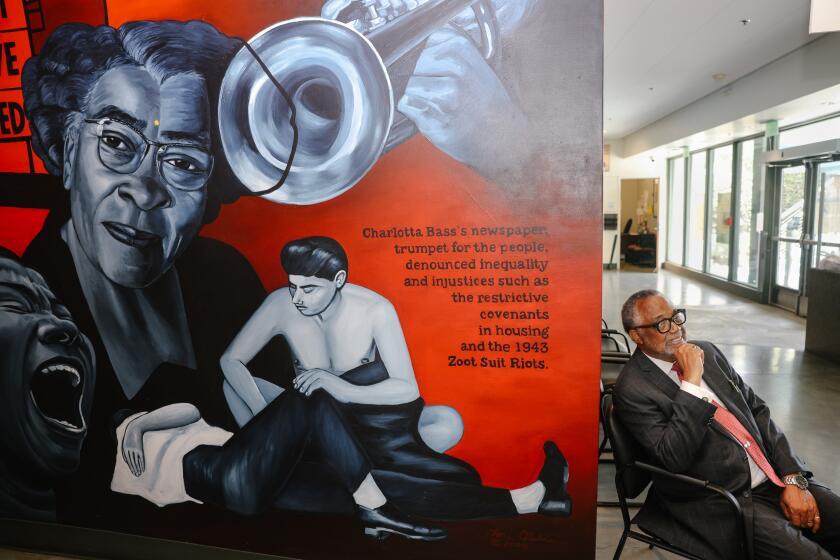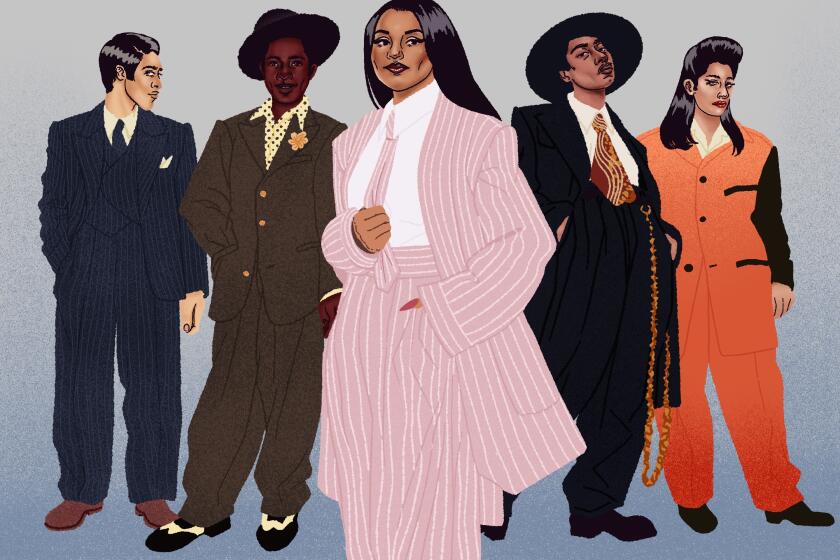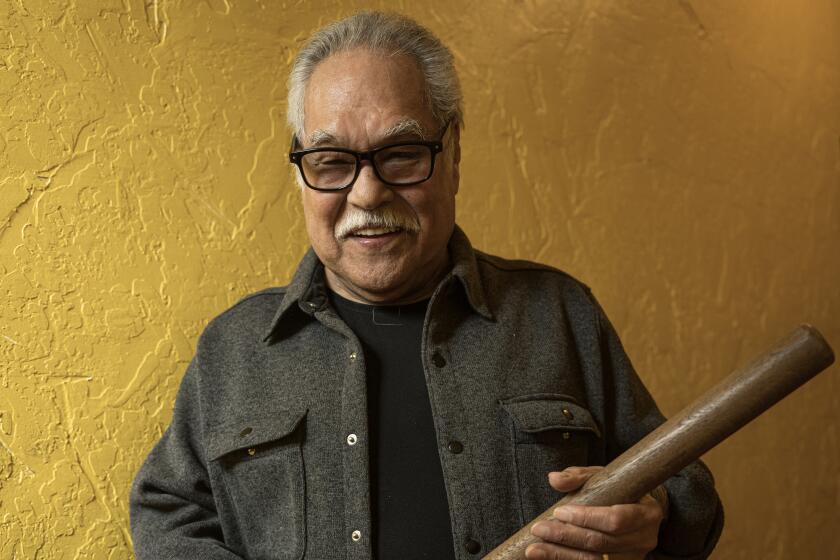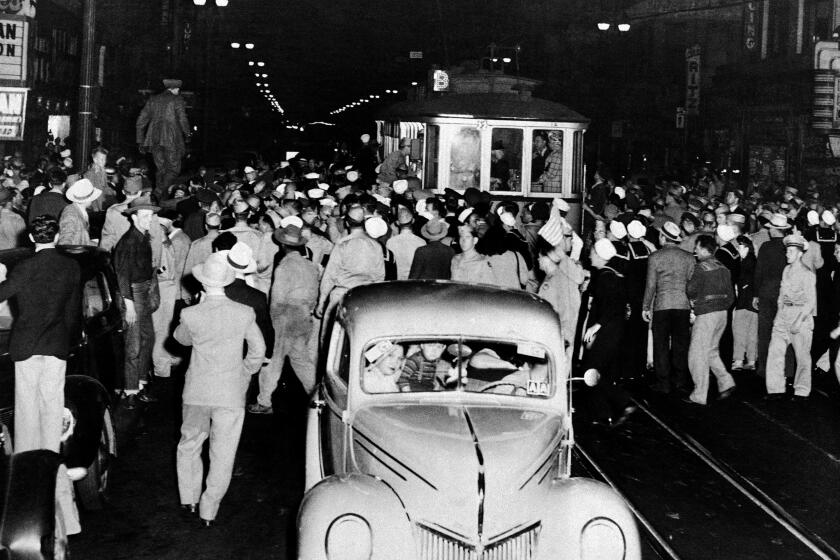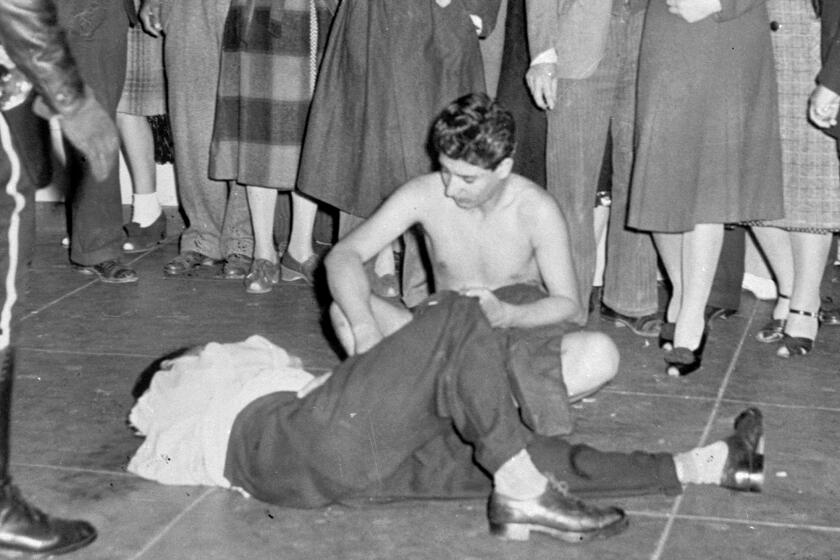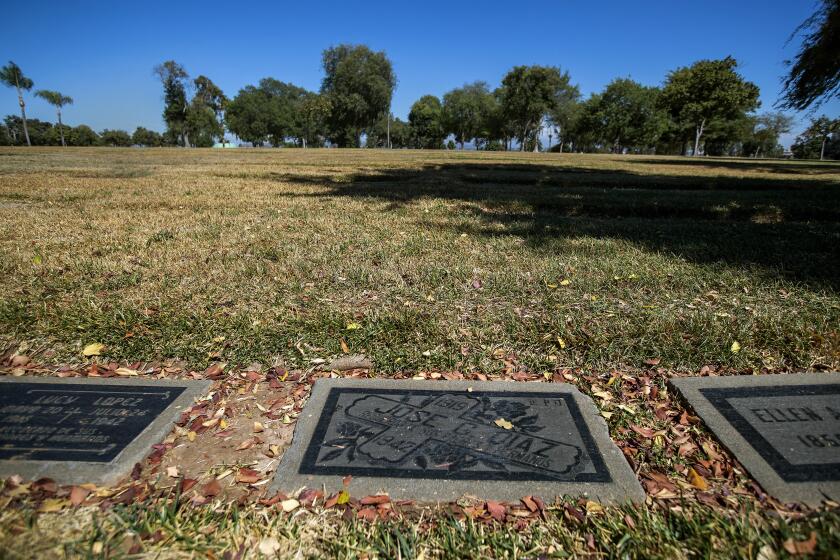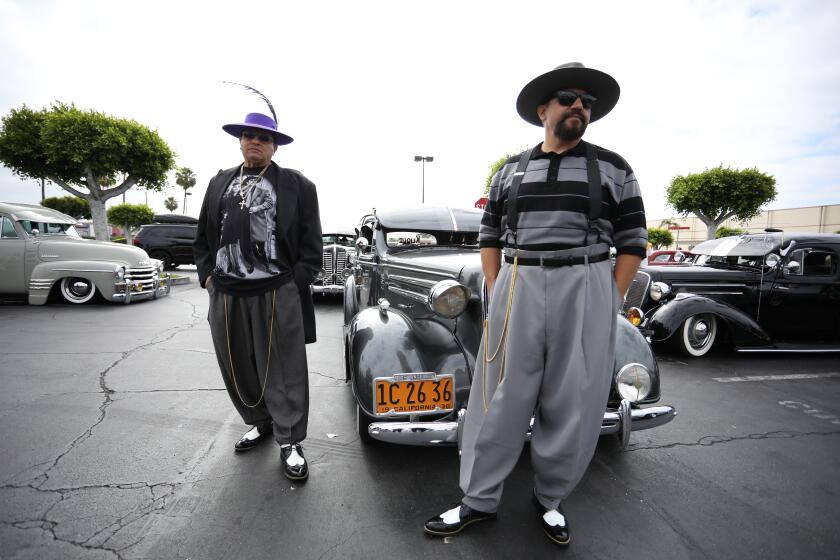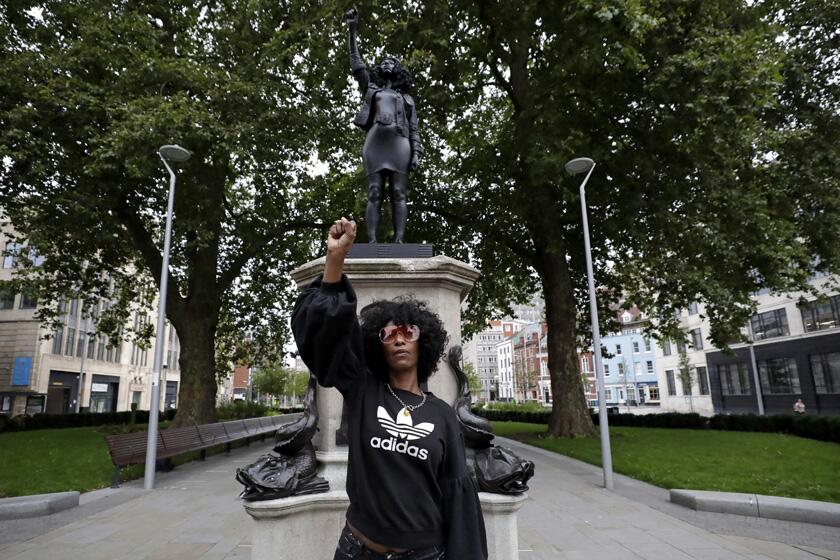Previous coverage: Zoot Suit Riots
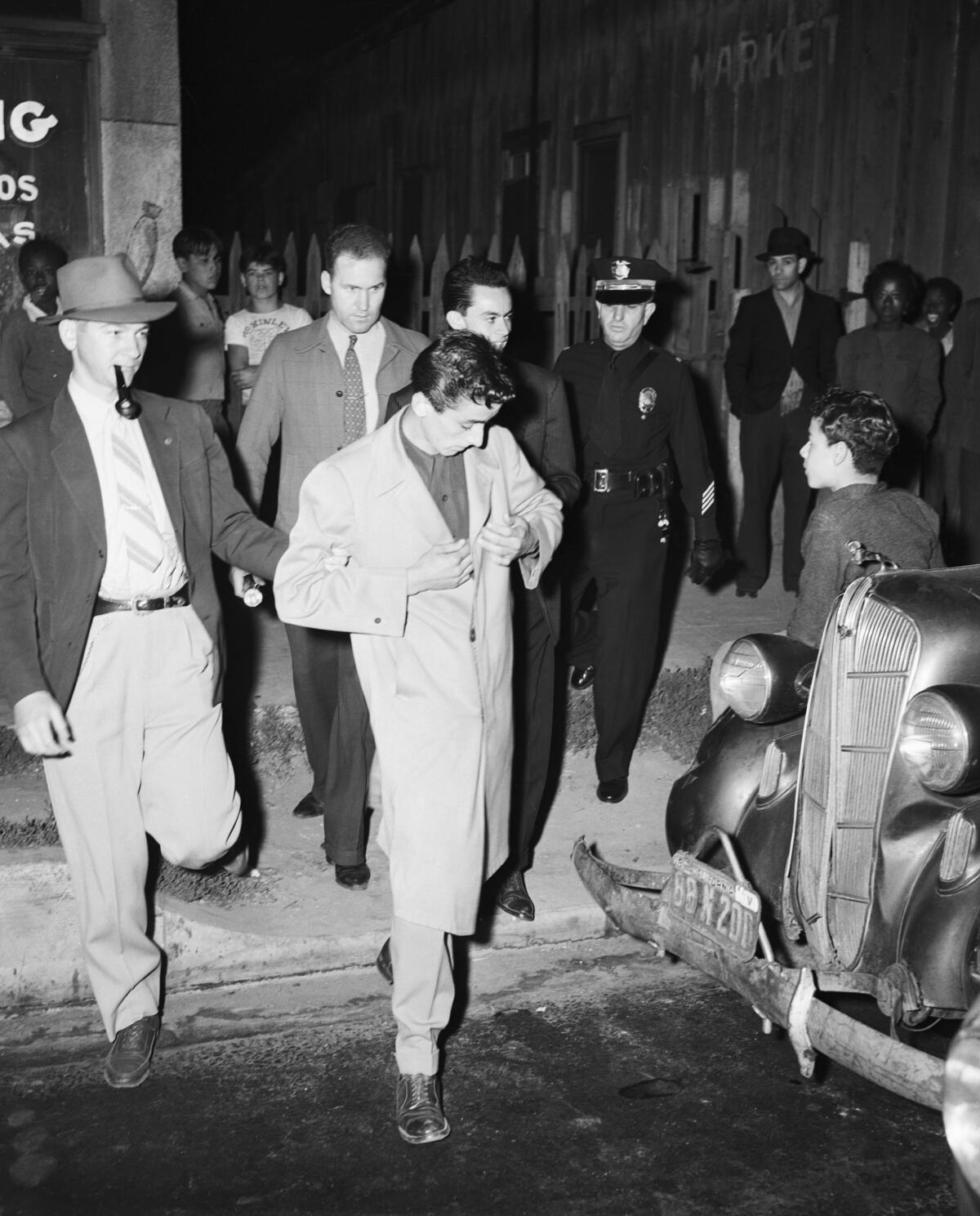
The Zoot Suit Riots were a series of racist attacks on the Mexican, Black and Filipino communities of Los Angeles during the first week of June 1943. For six nights, military servicemen and civilians took to the streets to beat, harass and humiliate anyone who wore the baggy, flamboyant suits that were donned by some of the biggest jazz musicians of the era.
Note: The Times’ digital archives go back only to 1984. Any coverage before that year will not appear in this list of stories.
The unity of two long-neglected communities during trying times is a reminder of what we desperately need in Los Angeles.
The zoot suit was vilified by L.A. authorities during the Zoot Suit Riots in 1943. But its dandy-ish profile continues to influence fashion
‘Zoot Suit’ is by far the most influential play by a Chicano writer, and the only one to reach Broadway. It changed Los Angeles’ historical memory and the American theater forever
Eighty years ago this month, Los Angeles was engulfed in the mayhem and violence that became known as the Zoot Suit Riots.
The L.A. County Board of Supervisors condemns the Zoot Suit Riots that targeted Latino, African American and Filipino youths 80 years ago.
The murder of Jose Diaz in 1942 led to two landmark injustices against Mexican Americans. So why has history forgotten him?
As cars cruise through Los Angeles, event participants remember the Zoot Suit Riots of 1943.
Shouldn’t public monuments have public input? In the George Floyd moment, artists and designers are changing the nature of monuments and the histories they honor.
It takes a special kind of evil to declare war against children and teenagers, but that’s our current presidential administration.
The lights flickered on inside the California Theatre and a band of sailors tore up and down the aisles yanking young people from their seats by the lapels of their suit jackets.
“Zoot Suit,” the landmark 1978 play by Luis Valdez that put the struggles of Mexican Americans front and center, is back where it originated at the Mark Taper Forum in an exhilarating revival that couldn’t have come at a more opportune time.
For Mexico, ‘Zoot Suit’ still relevant after 30 years
Manuel Reyes, a defendant in the infamous 1942 Sleepy Lagoon murder case in which 12 young Mexican American men were unjustly convicted of the murder of a Mexican national and served nearly two years in prison before their convictions were reversed, has died.
Henry Ynostroza, a defendant in the infamous 1942 “Sleepy Lagoon” murder case in which 12 young Mexican American men were unjustly convicted of the murder of a young Mexican national, has died.
His court saw Chessman, Pantages, Sleepy Lagoon trials. He also meted out many death sentences.
LAST YEAR, warfare broke out between African Americans and Latinos at Jefferson High School.
Murder at the Sleepy Lagoon: Zoot Suits, Race, and Riot in Wartime L.A.; Eduardo Obregon Pagan; University of North Carolina Press: 312 pps., $49.95
Joseph Tovares turned detective to document L.A.’s 1943 clashes for ‘Zoot Suit Riots,’ airing on PBS.
Theater * Luiz Valdez is reviving his landmark 1978 play, this time in a staged production for radio.
Those turbulent June days of 1943 became known as the “zoot suit riots,” but perhaps they should be called the “servicemen’s rampage.”
History: Defendants in sensational 1942 murder trial gather to celebrate birthday of woman who helped organize their defense committee. All those convicted in the famous Zoot Suit case were eventually exonerated.
The principal of a suburban high school who had blocked the showing of “Zoot Suit” a month ago relented and was prepared Tuesday night to show the movie on campus.
Before the beatings of Rodney King and Reginald Denny, there was Sleepy Lagoon.
Whenever I cover demonstrations against Police Chief Daryl F.
Whenever I cover demonstrations against Police Chief Daryl F.
It was entirely in keeping with his life thus far that Luis Valdez, at his 50th birthday party last month, stepped up to a microphone and saluted his own death.
Four barefoot actors and Luis Valdez are sitting on the floor of a spare rehearsal studio at the Los Angeles Theatre Center.
Folk heroes arise of a need to articulate feelings unsung by conventionality.
